Out of all the popular social media platforms, Twitter is perhaps one of the most hotly debated among business owners. Odds are, you’ve questioned whether the site is a waste of your valuable time and wondered if it’s worth it to set up your own business Twitter account. After all, can it really be possible to market and grow your business using 280 characters or less?
At V Digital Services, we have a few theories about why some business owners are hesitant to branch out into Twitter – because if you’re unsure about this social site, you definitely aren’t alone. We’ve found that for many business owners, the reasons why they aren’t yet using Twitter for business comes down to a few common factors:
- Not knowing how to start a Twitter account for business purposes
- A lack of familiarity with the platform as a whole
- The (inaccurate) perception that Twitter is a less effective social media site for marketing
- The (also inaccurate) belief that Twitter is for entertainment purposes only
But don’t worry: we’re here to break down whatever walls are keeping you from marketing on Twitter right now. Because quite frankly, it offers up outstanding opportunities to advertise and grow your business… and once we explain the how what, and why of Twitter marketing, you won’t want to miss out.
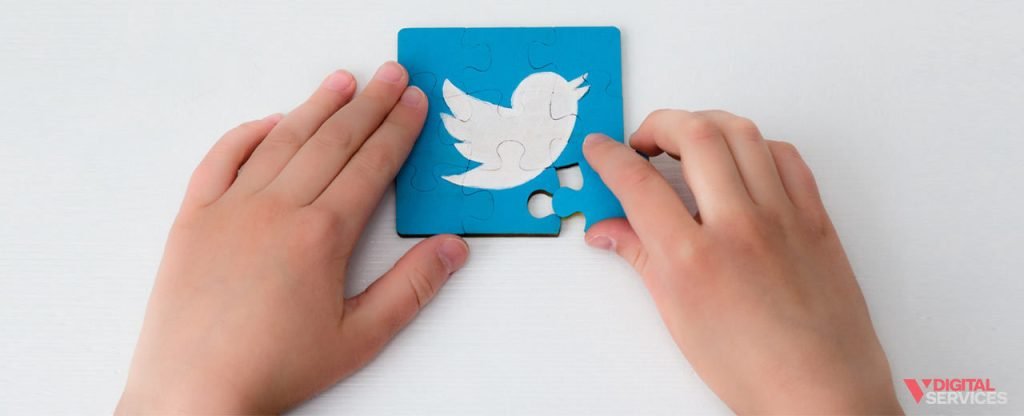 Maybe you have an inactive Twitter account that’s gone stale, or maybe you’ve never really thought Twitter was for you. No matter where you are in your journey with this one-of-a-kind platform, we’re going to help get you on track to learn how to market a business on Twitter – let’s do it!
Maybe you have an inactive Twitter account that’s gone stale, or maybe you’ve never really thought Twitter was for you. No matter where you are in your journey with this one-of-a-kind platform, we’re going to help get you on track to learn how to market a business on Twitter – let’s do it!
Why Use Twitter for Business and Marketing
If you’re like most entrepreneurs, you want to make sure that figuring out Twitter for businesses is a solid investment of your time and effort.
So, here are just a few statistics that spell out its promising potential (Sources: Startup Bonsai and Twitter):
- In 2020, Twitter had a total of 330 million users. About 178 million of those users log on every day.
- By 2024, it’s estimated that the number of Twitter users will grow by at least 10 million – that’s more than 7.5%.
- Every minute, 350,000 new “tweets” (Twitter posts) are posted. When you do the math, that’s about 500 million tweets every single day.
- 54% of Twitter users say they take action after seeing a brand mention, such as making a purchase from the brand. When there are multiple brand mentions, that number jumps to nearly 80% of users ready to take action.
- The amount of time spent viewing ads on Twitter is more than 25% higher than any other social media platform.
Have we convinced you yet? There’s no arguing with the numbers: Twitter and marketing can be a match made in entrepreneurial heaven. Check out the article covering, ways to grow your brand’s social media presence to learn additional tactics.
How to Use Twitter: The Basics
Before we dive into a Twitter marketing how-to, let’s take a few steps back. You’re going to need to know how to create a Twitter account and actually use it before you can start strategizing.
If you’re already a seasoned Twitter user, you can skip ahead (although you might pick up a few useful tips from this Twitter 101 lesson). But if you’re still pretty new to the social platform, this is the perfect place to start.

How does Twitter work?
Twitter is a unique combination of social media and microblogging, specifically set up to encourage discovery, exploration, and quick browsing.
A “tweet” is a short message (usually about 280 characters) that you can create and share from your Twitter profile. You can send/post tweets as often as you’d like, and it takes just a few minutes from start to finish.
In any given user’s Twitter timeline, there is a wide variety of tweets from the accounts they follow. As they scroll, they can read, click on, and interact with each tweet.
Parts of a Twitter profile
There are six key parts of a Twitter profile:
- Your Twitter handle is your identifier on the website and appears as @yourname. You have up to 15 characters for your Twitter handle, so abbreviation is usually a must.
- Your username/display name appears directly above your Twitter handle and can be up to 50 characters. Generally, you will make your display name the name of your business/brand.
- Your profile photo is shown on every tweet you post, as well as your main profile page. Most brands use their logo because it will be the visual representation of your business on the site.
- Your bio is a short, 160-character description of your brand/business. You can include your website URL, as well as your location and other pertinent details.
- The header image is situated behind your profile picture and is a great spot to highlight events, promotions, and other recent happenings for your business. While you’ll generally keep your profile photo the same, the header image should be regularly updated.
- Your pinned tweet is the first tweet a user will see when they arrive on your profile page. The goal is to make this tweet an interesting and accurate representation of what’s going on with your business right now. You can change your pinned tweet as often as you’d like.
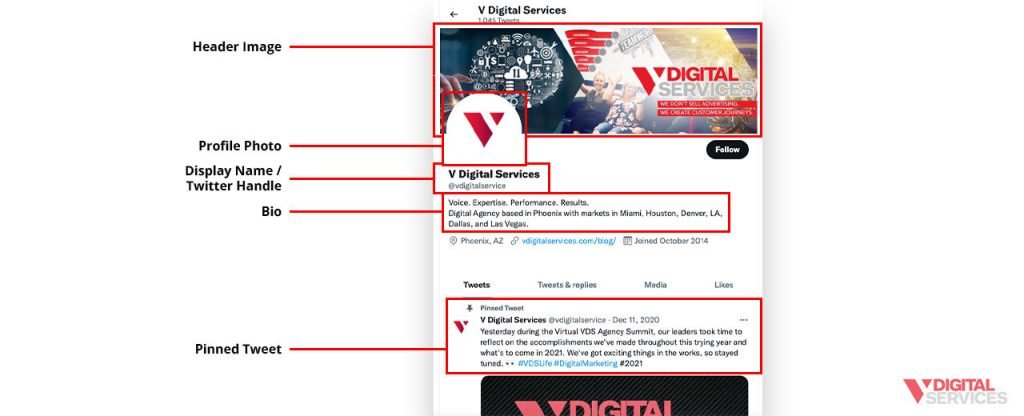
Twitter terminology
There is a “language of Twitter” made up of a handful of key terms, and understanding these words and phrases will make it much easier to learn your way around the site.
- @: The “at” symbol is paired with a user’s Twitter handle to tag/mention them in a tweet.
- # (hashtag): Pair the pound sign with a word/phrase, and it automatically turns into a clickable link. All tweets with the same hashtag are indexed so that users can easily follow specific topics/events with just one click.
- Direct message (DM): Direct messages allow you to privately chat with an individual user without any limit on characters. For businesses using Twitter, DMs are usually the best option for conversing with a customer/follower in detail.
- Follow/followers: When users follow an account, they are essentially subscribing to its tweets (which will show up in their timeline). Your followers are the Twitter users that have followed you and can view your tweets in their timelines.
- Retweet: Much like sharing a Facebook post, retweeting allows you to repost a specific tweet (crediting the original user) so that it appears on your profile and your followers’ timelines.
- Timeline: The timeline is like a “home base” where you see tweets and retweets from all accounts you follow, in addition to promoted tweets.
- Trending topics/trends: On the left-hand side of your homepage on Twitter, you can see a “Trends” box that contains various topics and hashtags that are popular at the moment. You have the option to customize the display according to your location or set it up to show just what’s popular with the users you follow.
What is Twitter used for?
Like the large majority of social media platforms, Twitter is, first and foremost, a site used recreationally. Many users started their accounts for fun, choosing to follow other accounts belonging to their friends, celebrities, and favorite brands.
 But in recent years, the site has also evolved into a hub of truly valuable content. Your Twitter feed can provide you with a steady stream of quick updates from journalists, experts, creators, brands, politicians, thought leaders, and more, right alongside tweets from your family and friends.
But in recent years, the site has also evolved into a hub of truly valuable content. Your Twitter feed can provide you with a steady stream of quick updates from journalists, experts, creators, brands, politicians, thought leaders, and more, right alongside tweets from your family and friends.
Today, Twitter is a source of diverse thoughts, ideas, and information, serving as a multipurpose platform that appeals to a wide range of online users. It is a form of news reporting, a means of social interaction, and most importantly for your business, a powerful marketing tool.
How to set up a business Twitter account
The last thing you’ll need to do before using Twitter for online marketing is to create your account. Here’s how:
- Create your account. On the Twitter homepage, click “Sign Up” and follow the prompts to set up your account. Choose a Twitter handle that positively represents your brand/business (you can change it later). You’ll complete various steps to verify your identity/account and create a password.
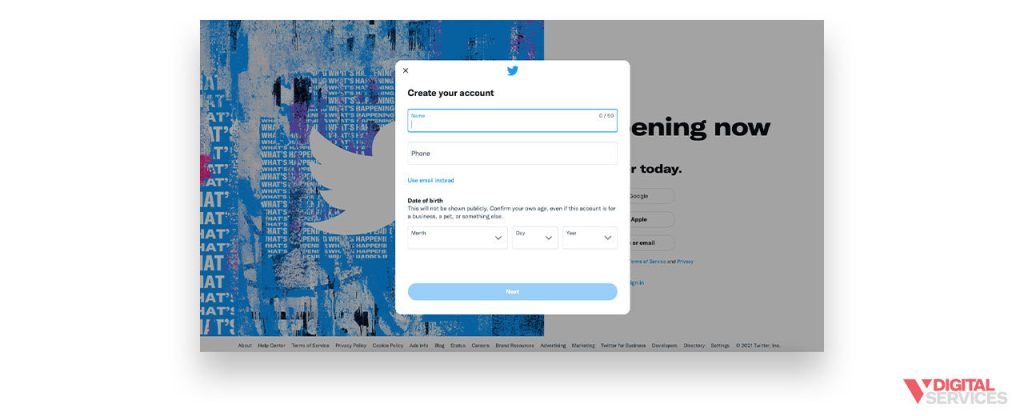
- Set up your Twitter profile. Once you’ve finished the basic steps, you’ll move on to building your profile. Spend some time and effort on this part because your profile page is how users will see (and perceive) your brand online. For your Twitter business profile, you’ll want to complete the following:
a. Profile picture
b. Bio
c. Interests
d. Select users to follow (Twitter will suggest some of its most popular accounts, but hone in on those that relate to your business/industry)
e. Activate notifications
f. Cover photo
g. Location/website
That’s it! Now, you have a Twitter account that’s ready to go – and you’re prepared to start learning some basic marketing strategies for Twitter.
How to Use Twitter for Business Marketing
You’ve arrived at the most exciting part of this guide: how to market a business using Twitter. Building a large following and a quality portfolio of tweets will not happen overnight, so be prepared to make a consistent effort. But with some time, patience, and these practical tips and strategies, you’ll be well on your way to becoming a master of Twitter marketing.
1. Set specific, measurable goals and milestones.
The best way to market on Twitter – and anywhere else – begins with a clear plan. Without a plan in place, you put yourself at risk of wasting time, energy, and money. Even though Twitter is incredibly simple to use, just posting at random isn’t going to get you very far.
 Instead, start by creating a set of goals and milestones that you’d like to achieve on the site. Essentially, you’re choosing your destination; once that’s in place, you can plan out the most ideal way to get there.
Instead, start by creating a set of goals and milestones that you’d like to achieve on the site. Essentially, you’re choosing your destination; once that’s in place, you can plan out the most ideal way to get there.
Some examples of marketing goals on Twitter include:
- Increase your website traffic
- Generate high-qualified leads
- Deliver faster, higher-quality customer service
- Network with other brands
- Build a following and strengthen your brand identity
Pick your goals, then pinpoint specific accomplishments. In other words, what will it look like when you achieve your goal? Maybe you want to generate 15 qualified leads via Twitter every month, increase your website traffic by 5%, or gain 1,000 followers.
Establish a deadline for each goal/accomplishment (monthly, quarterly, weekly, etc.).
Of course, goals are meaningless without a system for tracking your progress. A tool such as Google Analytics can help you collect the relevant data, measure various activity thresholds, and see what’s working in the pursuit of your goals.
2. Learn how to optimize a Twitter profile for business.
We’ve already covered how to set up a business profile on Twitter, but now we’re going to talk about how to optimize it. While it’s true that your tweets will be a core focus of your time on Twitter, don’t underestimate the value of a well-crafted profile page.
Your profile page is critical for branding, providing you with a chance to make a positive impression on users. When users arrive on your profile page, they immediately begin assessing it (most likely subconsciously) to decide if they want to follow you. It’s a make-it-or-break-it moment, so you should do everything possible to sway the odds in your favor.
Here are a few important ways to optimize your Twitter profile:
- Write a brief but interesting bio that accurately describes your business
- Use a creative, professional-quality cover photo
- Include links to your business’s website, blogs, and other important web pages to generate traffic and add credibility
- Use brand-related keywords when writing your bio
- Stay true to your overall branding/aesthetic (colors, photos, etc.)
- Check (and double-check) for any spelling/grammar errors
3. Begin building a Twitter community.
There’s no doubt that any business owner would love to be able to gain thousands of followers in the blink of an eye, but it doesn’t quite work that way. The secret to learning how to get more followers on Twitter comes down to one word: community.
 At its core, Twitter is a social media site specifically created for interaction, engagement, and connection. By taking a proactive approach and engaging (with purpose), you can organically gain Twitter followers at a steadier – and more sustainable – rate.
At its core, Twitter is a social media site specifically created for interaction, engagement, and connection. By taking a proactive approach and engaging (with purpose), you can organically gain Twitter followers at a steadier – and more sustainable – rate.
First, follow Twitter accounts that are important within your niche and industry. You can also connect with colleagues, customers, relevant influencers, and even other brands.
Eventually, some of the accounts you’re following may follow you back. But your work isn’t done just yet.
Then, you can initiate authentic relationships in a few different ways:
- Commenting on/liking their tweets (and other tweets related to your niche)
- Retweeting and mentioning/tagging the relevant users in your posts
4. Curate a collection of interesting content.
With Twitter, you can share an impressively broad range of information. In fact, your tweets can include images, videos, blog links, quotes, and even GIFs. But even though having such a variety of content types to choose from makes Twitter seem easy, it is challenging in its own way.
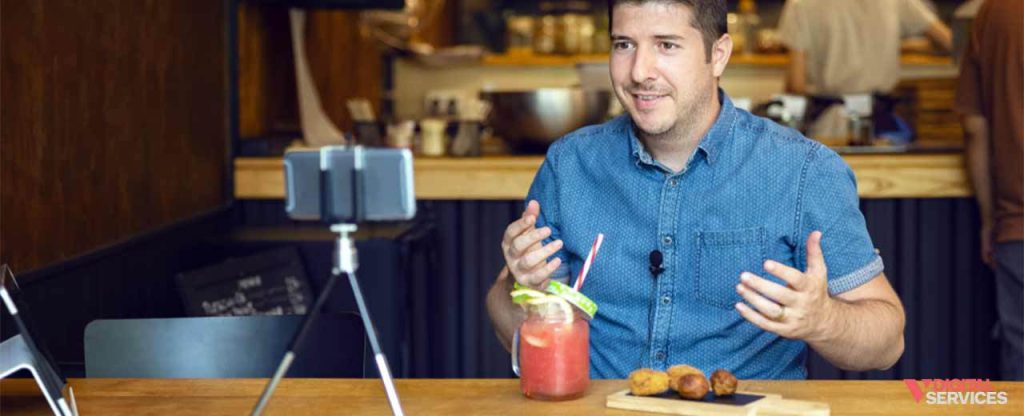 Because Twitter moves at such a fast and furious pace, you’re immediately under pressure to crank out a considerable amount of content.
Because Twitter moves at such a fast and furious pace, you’re immediately under pressure to crank out a considerable amount of content.
Creating all of that content from scratch would be incredibly time-consuming, even for a large corporate brand. But with content curation, you can take a smarter, more efficient approach. Plus, it makes it easier to stay consistent across all your Twitter content.
Think of your Twitter profile as a gallery of sorts: what sort of “art” would you want to be displayed if it was your brand being represented? Now, you can make some of that art yourself (original Tweets), but you can also find and retweet other content that aligns with your larger concept.
Here’s an example of what that could look like in action:
Let’s say you’re the owner of a local coffee shop, and you’ve developed a brand identity based on a warm, inviting aesthetic where customers will want to “cozy up” with a hot beverage.
On any given day, your plan for content could include:
- A photo of a comfortable corner of your coffee shop, complete with a plush lounge chair and steaming latte
- A special offer for Twitter followers, featuring a coupon for $1 a seasonal beverage
- A retweet of a post from a local bookstore with an added comment about the perfect pairing of a good book and a hot coffee
- A humorous quote about coffee and a link to your seasonal beverage menu
- A retweet of a post from a community events account featuring information about an upcoming foodie festival in the area, with an added invitation for festival-goers to stop by for a morning coffee before the event begins
As you can see, all five of those posts fit within the type of content you would want to curate for this type of business. And yet, thanks to a balance of retweets, a special offer, an image, and a quick quote and link, you probably wouldn’t have to spend a huge amount of time putting it all together.
5. Understand Twitter ads and decide if/when they’re a good option for you.
Advertising on Twitter can be a fantastic way to reach new customers and spur them into action. But just like any type of social media ad, they require strategy.
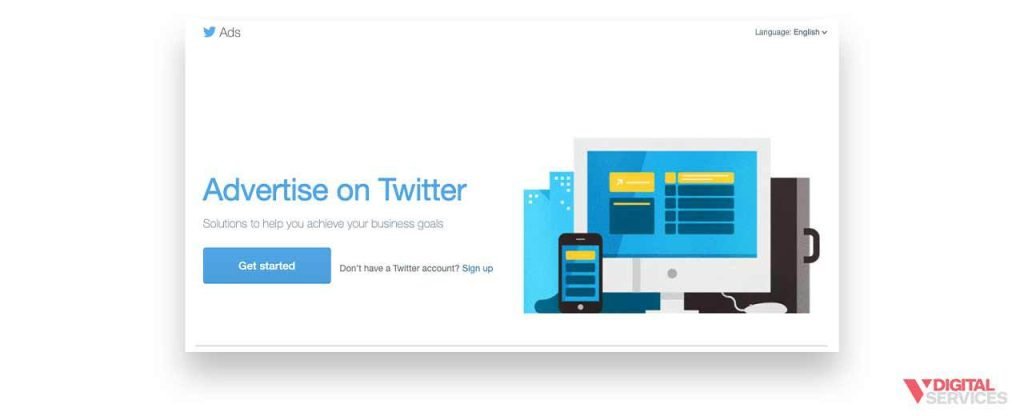 Twitter Ads are paid tweets promoted in a targeted user’s timeline, tweet details page, and/or profile. You can use Twitter ads to achieve a number of goals, including gaining new followers, boosting engagement, pinpointing leads, increasing website clicks/conversions, and others. Depending on your goal, you’ll choose a specific ad campaign type (or create your own).
Twitter Ads are paid tweets promoted in a targeted user’s timeline, tweet details page, and/or profile. You can use Twitter ads to achieve a number of goals, including gaining new followers, boosting engagement, pinpointing leads, increasing website clicks/conversions, and others. Depending on your goal, you’ll choose a specific ad campaign type (or create your own).
Then, you have the flexibility to choose your form of targeting. For example, you can target users according to certain demographics, their interests in a specific regional event, user behavior, and other factors. Again, this decision will be based on your overall goal.
6. Check out your competition – and follow them!
It may sound counterintuitive to follow your competitors… because why would you want to add to their follower count? But actually, it’s one of the best ways to learn how to use Twitter to market a business more effectively.
When you’re following your competitors, you can easily keep an eye on what they’re doing. As a result, you can see what they’re doing differently than you and whether or not it’s working.
 If they have more followers or engagement than you, you can have a front-row seat to a lesson in growing your own account. Maybe you’ll discover that they post more frequently than you do or are skilled at interacting with other Twitter accounts.
If they have more followers or engagement than you, you can have a front-row seat to a lesson in growing your own account. Maybe you’ll discover that they post more frequently than you do or are skilled at interacting with other Twitter accounts.
Keep in mind that this doesn’t mean that you should make your own Twitter profile a carbon copy of your competitors. Use their content to learn from, not to duplicate directly. You still have to stay true to your brand and maintain an authentic brand identity if you want to succeed in the long term.
7. Keep it professional.
Common sense tells you that, as a business, you’ll want to avoid controversy online. Unfortunately, many businesses inadvertently end up in hot water when they fail to consider the various types of content that can alienate certain users.
For example, it’s usually best to steer clear of political or religious posts. Although some followers might agree with your stance, others may consider your beliefs a potential reason to avoid your brand.
Think before you post (and repost!), and always maintain a positive, professional tone in your online interactions. Your Twitter profile is like a virtual storefront, so conduct yourself accordingly.
Tweet Your Way to Marketing Milestones with Help from VDS
Social media marketing can be an extraordinarily useful tool for your business, both for your online presence and real-world growth.
From Twitter to Facebook, and every site in between, there are many ways to make social media work for your business. And when marketing on social media is a part of a larger, well-thought digital strategy, the possibilities are virtually limitless.
 V Digital Services is an industry-leading digital marketing agency with a broad scope of experience, clients, and skills. We understand what it takes to get your brand in front of your ideal online audience and how to build a digital advertising plan that serves your unique goals. Our team of social media experts will meet you wherever you are in your online experience – and then, we’ll help you navigate a direct route to successful marketing.
V Digital Services is an industry-leading digital marketing agency with a broad scope of experience, clients, and skills. We understand what it takes to get your brand in front of your ideal online audience and how to build a digital advertising plan that serves your unique goals. Our team of social media experts will meet you wherever you are in your online experience – and then, we’ll help you navigate a direct route to successful marketing.
If you aren’t already using Twitter for business, now’s the time to act… because we can promise you that your competitors will happily leave you behind.
Reach out to V Digital Services to start talking strategy with our team today!
Featured Images: metamorworks, AlesiaKan, Sattalat Phukkum, elenabsl, Rawpixel.com, Arthimedes, Dan Rentea, rudall30, and DisobeyArt/Shutterstock

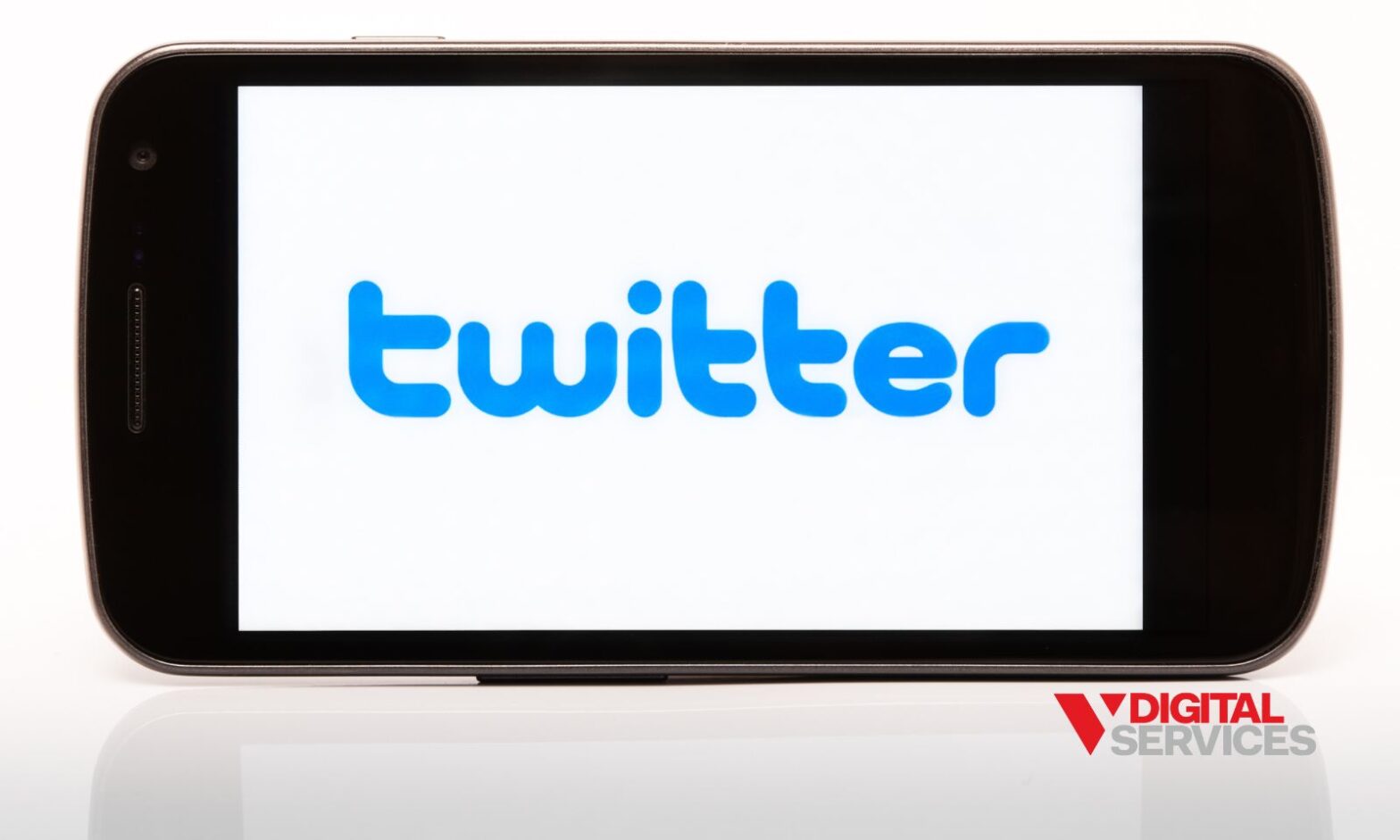
 PREVIOUS
PREVIOUS